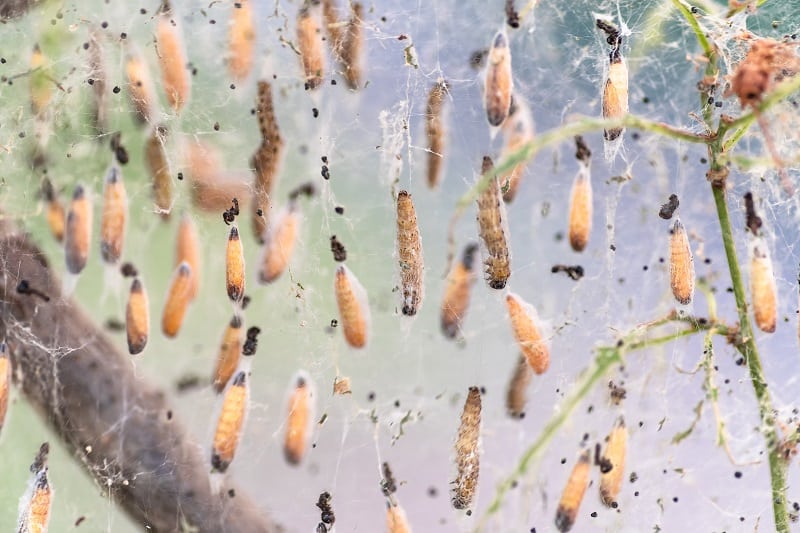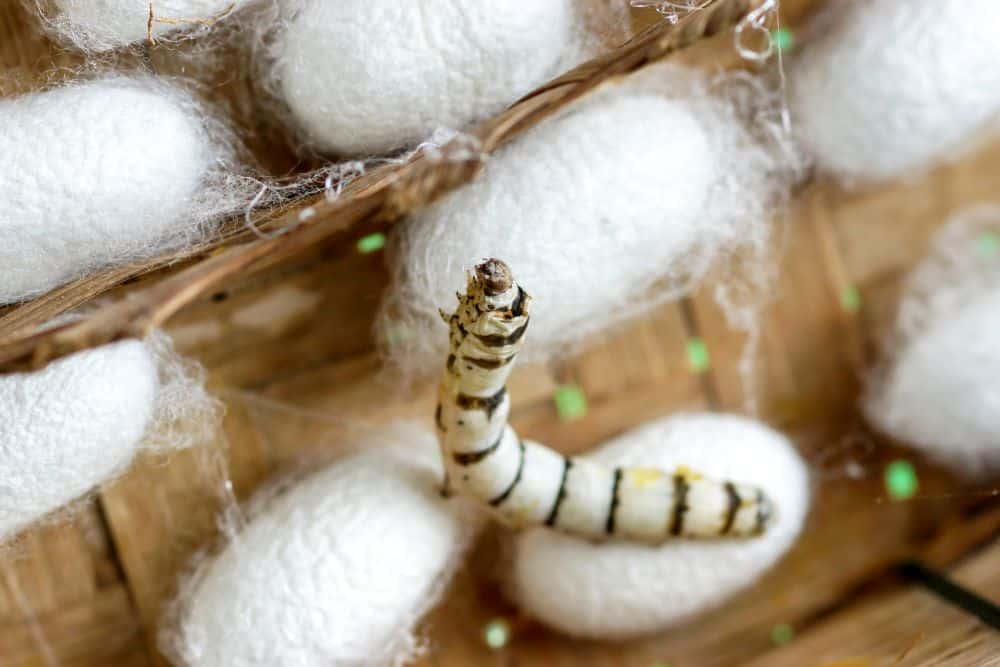When discussing the topic of webs, many people might think about spiders and their intricate creations.
However, many may wonder if other creatures, such as moths, are also capable of making webs.
This article will provide a brief introduction to the subject and answer the question of whether or not moths can make webs.
Firstly, it is important to note that moths go through a life cycle that includes a larval stage, during which they are known as caterpillars.
Caterpillars are known to create webs as a means of protection from predators and to move around as they feed on leaves from trees.
However, this brings up the question of whether the adult moths themselves are capable of making webs, as their behavior and abilities may differ significantly from their larval stage.
Moths are known to create web-like structures called “moth webbing,” which they generally build near food sources in order to trap insects that come to feed.
Moth webbing can vary in color depending on the species of moth, but it is usually white or light-colored.
Some moths, however, have darker webbing. It is important to differentiate between the webs created by caterpillars and the web-like structures made by adult moths, as they serve different purposes and differ in appearance.
Can Moths Make Webs?
Contrary to popular belief, moths do not make webs. It’s important to note that it’s the caterpillars, which are the larval stage of moths, that create webs as they feed on leaves from trees.
These webs serve as a protective measure against predators.

While adult moths don’t create webs, some moth larvae, such as gypsy moths, spin webs around trees to help them move and find food.
Some of those structures can look like nests. You should read our Moths’ Nest Guide to dive into that topic.
However, once they metamorphose into adult moths, they no longer produce webs.
In the case of pantry moths, it’s the larvae that produce silk webs in or around food packages and on cabinet walls.
These webs can lead to sticky secretions and clumped food. Pantry moth larvae create these webs as they feed on stored grains and other food items.
Web-Making Insects
Silk Moths
Moths’ larval stage, known as caterpillars, can create webs for various purposes.
For example, the fall webworm (Hyphantria cunea) is a moth whose caterpillars construct large webs at the ends of branches to protect themselves from predators and provide a place to feed on tree leaves.

Silk moths, such as the domestic silk moth (Bombyx mori), are known for their larvae’s ability to spin silk.
This silk is produced by caterpillars to create cocoons, which serve as a protective covering for their transformation into adult moths. High-quality silk is valued by the textile industry.
Other Insects
While moths themselves do not create webs, there are several other insects known for their web-making abilities.
The most well-known group of web-making insects are spiders, which spin intricate webs to catch prey.
Some spiders, such as the orb-weaver spiders, create beautiful, symmetrical webs while others, like the funnel-web spiders, construct more irregular and unique webs.
Another group of web-making insects are the bagworms, which are actually moth larvae belonging to the family Psychidae. Bagworm caterpillars construct small, bag-like cases out of silk and plant material, which serve as their homes and provide protection from predators.
Common Misconceptions
One of the most common misconceptions regarding moths is that they make webs similar to spiders.
However, moths do not make webs. Some species of moth larvae create silk casings or tubes around themselves for protection, but these are not the same as webs used by spiders for capturing prey.
Another misconception is that all moths are nocturnal, when in fact, many species are also active during the day. Diurnal moths can be found fluttering around flowers, just like their more popular counterparts, butterflies.
People often believe that all moths eat clothes, but this is not true.
Only specific species, such as the webbing clothes moth and the casemaking clothes moth, are known to cause damage to clothing.
Additionally, it is not the adult moths that eat the clothes, but rather their larvae.
It is also important to note that most moths do not exclusively feed on wool. While the larvae of some species enjoy feasting on wool fibers, they can also eat fibers of other animal origin3.
Moth Interaction with Webs
Moths and Spider Webs
Moths are known for their unique interactions with webs, particularly those created by spiders.
Some orb-web spiders build webs that are specifically adapted to catch moths, as their typical orbs are ineffective at retaining these prey due to their ability to escape easily.
One such spider is the orb-weaving spider species, C. akirai, which builds horizontal webs to catch moths fluttering up from below.
These spiders have evolved to produce a special kind of glue that turns moth defenses against them. The glue is specifically designed to adhere to the scales on the moths’ wings, making it difficult for them to escape.
This is an example of how spiders have adapted to prey on moths more effectively, leading to a unique interaction between the two species.
Conclusion
In summary, certain species of moth larvae, such as the Small Ermine moths, spin silk-like structures that resemble webs while in their caterpillar stage.
These “webs” serve a purpose of protection against predators and parasites.
Although these structures created by some moth larvae might sometimes be referred to as webs, they are not the same as those made by spiders.
As such, it’s important to differentiate between the structures spun by these moth larvae from those of true web-spinning creatures.
With this understanding, it is clear that while not all moths create web-like structures, specific species do have larvae that spin protective silk coverings during their development.
This unique feature adds to the fascinating characteristics of moths and their diverse range of adaptations in the natural world.

